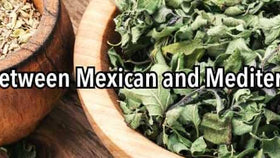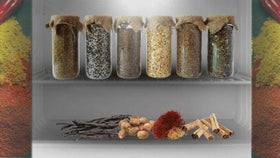The Spice of Life: Everything You Need to Know About Saffron
What Is Saffron?
Saffron is the most expensive spice in the world, and for good reason.
This luxurious spice has been a prominent part of many cultures around the world and has many health benefits. But that information is useless unless you know how to use it.
We’ve made an ultimate guide that will teach you everything you need to know about saffron, from its origin, how to use it, and where you can buy it. Keep reading our page to learn all about saffron, the spice of life!
Saffron is a spice that comes from the pistils of a flower called the Crocus Sativus. This spice has become a staple in various histories, cultures, and cuisines around the world. Saffron is used in cooking and in tea, but it also has a history in medicines and cosmetics.
Where Does Saffron Come From?
Saffron is believed to have originated in Greece. This plant no longer grows in the wild naturally, but it's cultivated in many countries around the world.
Crocus Sativus grows best in dry and moderate climate types, so it can't be grown anywhere tropical or polar.
Today, the world's leading saffron cultivators are in the Middle East and the Mediterranean. While there are smaller-scale saffron producers in the United States, most saffron is imported from Iran, Afghanistan, Pakistan, Spain, Greece, India, and Morocco.
History of Saffron
Saffron has been cultivated for over 3,000 years in many cultures and civilizations. Aside from being a spice, saffron has also been used for fragrance, dyes, and medicine. We’ve made brief descriptions of how saffron served each purpose in history below.
Medicinal
Many cultures believed saffron had healing properties and would infuse it into their medicines, teas, and even baths to help cure their ailments. While saffron isn’t used in medications today, it still offers a number of health benefits when consumed.
Some examples in history include Egyptian healers who used saffron to treat gastrointestinal, renal, and urinary tract diseases. Alexander the Great mixed saffron in his baths to help heal his wounds. Saffron was even highly sought after during the Black Death because of its medicinal properties.
Fragrance
Saffron's sweet aroma made it a prized perfume for many wealthy figures in history. For example, Ancient Greeks and Romans took saffron baths and used the spice as potpourri in important public places. Ancient Persians would even infuse saffron and sandalwood together to make soap after heavy labor.
Dyes
Because of its vibrant color, some cultures utilized it to make dyes. People would dip their clothes in saffron-based dyes to achieve vibrant orange and yellow hues. Saffron even became the official color for robes and mantles for Buddhist monks after the death of Buddha Siddhartha Gautama.
Aside from dying clothes, saffron was also used in various cosmetics. When combined with animal fat or milk, it could be used as makeup or other skincare products. There are even prehistoric cave paintings that have been identified as using saffron-based pigments!
Why Is Saffron So Expensive?
It's estimated that it takes 1,000 flowers to produce just one ounce of saffron. Each saffron crocus only produces three pistils, which are harvested by hand and dried for about 12 hours. These flowers also only bloom for a brief period that lasts less than two weeks around the ending of October.
Farmers who grow saffron crocus typically walk their fields daily around harvest season to find any bloomed flowers to make sure they don't miss their window of opportunity. Since the pistils are so fragile, they have to be hand-plucked, which takes a significant amount of time.
The combination of the labor intensive harvesting of these delicate flowers and the minute amount of spice they produce is what makes saffron so expensive. Some versions of saffron may be cheaper, but they’re likely not made of the same quality parts of the flower, or they may be adulterated.
Major producers of this spice will often send their product for lab testing to confirm its quality before trading. Some good indicators that you have true saffron are its vibrant red color and sweet hay aroma.
How to Use Saffron
Saffron is a strong spice and can make your food very bitter if you use too much. It's also important to avoid putting raw saffron directly into your food because you'll end up with uneven flavors throughout the dish. The two best methods for using saffron are soaking or toasting it.
Soaking Saffron
Before soaking saffron, you'll want to grind up your threads into a powder consistency with a mortar and pestle. Next, you'll need to steep the powdered saffron in a liquid, preferably one that you'll use in your recipe anyways.
This liquid could be warm water, milk, stock, or even white wine. Soak for about half an hour and then add the soaked saffron and any required liquid to your recipe.
Toasting Saffron
Some recipes may call for toasted saffron, in which case you'll put the full threads into a hot skillet over medium heat. You should only need to cook the saffron for about 2 minutes and be sure to stir it frequently to avoid it burning.
Cool your saffron and grind it into a powder using a mortar and pestle. Depending on how it's used in your recipe, you can either soak it or add it directly to your dish.
If you’re looking to incorporate saffron into your cooking but don’t know where to begin, try checking out some of these saffron-inspired recipes.
Buying Saffron Online
Due to its scarcity and price, finding true quality saffron can be a challenge. There are various resources online that may offer saffron, but you’ll want to make sure that you buy from a trustworthy source. Many websites will use fillers and additives, and in turn, offer their saffron for a cheaper price.
If you’re looking for a reputable source for the best-quality saffron, check out our website! We offer different types and cuts of saffron, all imported and lab-tested to guarantee their quality. Don’t just take our word for it; read what our customers are saying about our spices!







Slofoodgroup
Author